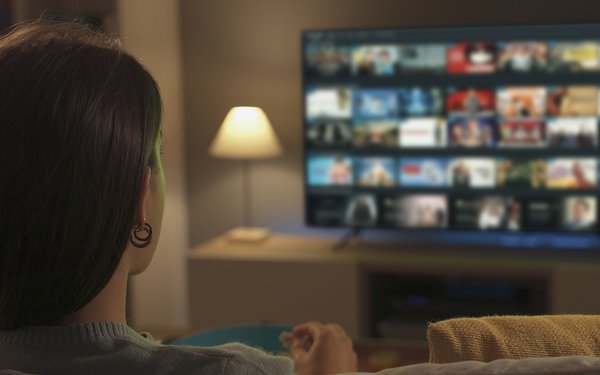Commentary0
5 Truths From 2025
- by Steven Rosenbaum , Featured Contributor, 9 hours ago

Every year we pretend the big shifts sneak up on us. They do not. They arrive slowly, argue with us for years, and then finally refuse to be ignored.
2025 was one of those years. Not because something entirely new appeared, but because several long-running arguments ended. The evidence landed, consequences became visible, and denial got harder.
These are not predictions. They are five truths that settled in during 2025, whether we were ready for them or not.
Truth 1: Attention is the real extractive industry
By 2025, it became impossible to keep pretending that social media harms are accidental. Court filings, internal documents, and youth harm litigation made the business model unmistakably clear. Platforms are not optimized for connection or creativity. They are optimized for time spent, emotional intensity, and behavioral predictability.
Once you see attention as an extractive industry, the moral fog lifts. We are no longer arguing about individual posts or parental responsibility alone. We are arguing about whether it is acceptable to build trillion-dollar businesses by systematically destabilizing focus, mood, and social trust. You cannot moderate your way out of an incentive system designed to reward harm.
Truth 2: AI did not create the crisis - it exposed it
Generative AI became the perfect villain because it arrived loudly. But 2025 made something else clear. Our information ecosystem was already brittle. AI simply removed the remaining illusions.
This was the year deception stopped feeling shocking and started feeling routine: cloned voices, fake invoices, automated scams that were just convincing enough to work. Not spectacular deepfakes, but boring fraud at scale.
AI did not break trust. It revealed how little was left to break. Trust has been eroded by years of engagement-driven amplification, algorithmic opacity, and monetized outrage.
If we focus only on AI guardrails without addressing the systems that reward speed over verification and scale over accountability, we will keep chasing the symptoms instead of the disease.
Truth 3: Schools moved faster than governments
While lawmakers debated, schools acted. In 2025, phone-free school policies went mainstream. These were not pilots, nor experiments, but the creation of actual rules to be followed.
The argument was practical, not ideological: Schools could not function as learning environments while competing with systems designed to hijack attention all day long.
The results were telling. Teachers reported calmer classrooms. Students reported relief, even when they resisted at first. Parents saw changes they had been told were unrealistic.
2025 showed that when institutions take attention seriously, outcomes change. When they don't do this, nothing else works.
Truth 4: Courts, not Congress, became the engine of accountability
For more than a decade, tech accountability lived in hearings and white papers. In 2025, it moved into courtrooms. Discovery orders forced platforms to turn over internal research. Judges asked questions regulators never had. Evidence entered the public record.
By mid-2025, Laura Marquez-Garrett and the Social Media Victims Law Center were representing more than 40% of personal injury cases in coordinated proceedings involving nearly 800 families, over 1,100 school districts, and multiple state attorneys general.
The legal strategy was precise: Convince courts that social media platforms are products subject to product liability standards, not platforms shielded by Section 230.
When a federal judge denied motions to dismiss school district public nuisance claims — ruling that mental health harms forcing resource diversion met the elements of the claim—the discovery process became unavoidable. What companies knew, when they knew it, and how they responded became legal questions, not PR exercises.
As Marquez-Garrett put it: "Money's great but the number one issue is fixing these products. These parents are pissed off and if you gave them the choice between a little bit of money and stopping these companies, there's no question."
Women leaders from the victims' rights movement played a central role here, insisting that harm be described in human terms and entered into the record as such. This mattered because courts deal in facts, timelines, and sworn testimony. They do not accept vague promises about future fixes.
While Congress stalled, judges quietly advanced accountability case by case. This is slow work. It is imperfect. But it is real. In 2025, transparency advanced not because of sweeping legislation, but because the legal system followed the evidence.
Truth 5: Gen Z stopped waiting to be protected
One of the most important shifts of 2025 did not come from Washington or Silicon Valley. It came from young people themselves.
Gen Z organized economically, not just culturally, with advertiser pressure campaigns, creator walkouts, and by funding conversations.
Groups like Reconnect, led by Sean Killingsworth, helped frame this shift clearly. This was not about banning technology or opting out of the digital world. It was about refusing to accept environments that profit from harm.
Young people made it clear they understand leverage, that systems change fastest when harm has a cost. And they are increasingly willing to apply that pressure themselves.
This reframes the narrative. Young people are not passive victims of technology. They are sophisticated critics of systems that exploit them, and builders of alternatives that reflect different values.
Where this leaves us
Taken together, these truths point to something larger: The crisis we are living through is not primarily about misinformation, AI, or bad actors. It is about architecture.
We built systems that reward speed over reflection, scale over responsibility, and amplification over accountability.
Predictably, those systems failed us. 2025 was the year it became harder to deny that reality.
The next phase is not about debunking lies faster or banning one more feature. It is about redesigning the spaces where belief is formed, attention is traded, and trust is either earned or destroyed. That work is slower than outrage and harder than innovation theater.
Truth did not disappear. We buried it under systems that could not support it.
Now the question is simple: Do we want systems that support truth, or don't we?







